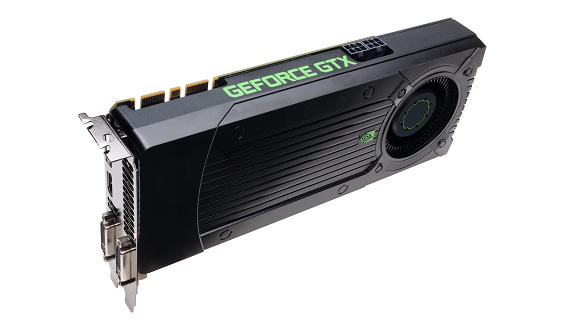GEFORCE GTX 660
Immediately after the release of the GeForce GTX 680, many users began to wait for the release of less powerful and expensive options, such as the well-known GeForce GTX 460 and GTX 560. But NVIDIA was in no hurry to release anything based on new chips, only based on the top GK104. But even a stripped-down version of the GeForce GTX 660 Ti is still sold at a fairly high price. And now, by the autumn period of mass sales, the company has released two new models designed for the price segment of less than $300.
Naturally, many users were waiting for less expensive solutions based on the successful Kepler architecture. And so, the GeForce GTX 660 and GeForce GTX 650 models were introduced. The new GeForce GTX 660 model graphics card provides the optimal combination of performance, price and power consumption. It is these solutions that are becoming the most popular among fans of PC games. A relatively inexpensive GeForce GTX 650 offers entry-level gaming performance and all the features of more powerful solutions.

This model is designed to strengthen NVIDIA's position in the segment of low-cost video cards, where such well-known models as the GeForce 8800 GT and 9800 GT performed extremely well a few years ago. Recall that the GeForce 8800 GT was announced in the fall of 2007 and the announced prices were within $199-$249, although at first those video cards were sold a little more expensive.
According to the company's tests, the GeForce GTX 660 is more than four times faster than the old model, and the GTX 460 is almost twice as fast as it. In addition to speed characteristics, the GTX 660 differs from the 9800 GT in supporting DirectX 11 (the old GeForce 8800/9800 do not have it), several times greater mathematical power, texture fetching and fill rate, as well as a large amount and bandwidth of local video memory. All this is completely logical and understandable, because almost 5 years have passed between the announcements of the GeForce 8800 GT and GTX 660! No wonder that during this time, many indicators of video cards in this price range have grown 3-5 times. along with the overall performance.
Specifications GeForce GTX 660
| Name | GeForce GTX 660 |
| Core | GK106 |
| Process technology (µm) | 0.028 |
| Transistors (million) | 2540 |
| Core frequency | 960 (Boost Clock 1033) |
| Memory frequency (DDR) | 3004 (6008) |
| Bus and memory type | 192-bit GDDR5 |
| Bandwidth (Gb/s) | 144.192 |
| Unified shader blocks | 960 |
| Frequency of unified shader units | 960 (Boost Clock 1033) |
| TMU per conveyor | 80 |
| ROP | 24 |
| DirectX | 11.1 |
| Memory | 2048 |
| Interface | PCI-E3.0 |
Unlike previous video cards of the GeForce GTX 600 family, the GTX 660 model announced today is based on a new mid-range video chip called GK106. This GPU supports all the features that appeared in the top-end GK104, on which the GeForce GTX 680 video card is based, and all the features of the Kepler architecture fully apply to it, including the organization of SMX multiprocessors and GPU Boost frequency enhancement technology.
Interestingly, although the GeForce GTX 660 model is based on the full (not stripped down) version of the GK106 chip, it includes five SMX multiprocessors, consisting of 960 stream computing cores and 80 texture units. The GeForce GTX 660 has three 64-bit memory controllers for a total of 192-bit access to local video memory. Since ROPs are tied to controllers, their number has not changed since the GTX 660 Ti and is 24 blocks. As in the case of the older solution based on the GK104, the GeForce GTX 660 memory controller can work with mixed-capacity memory chips. It was this decision that made it possible to make the amount of memory not 1.5 or 3 GB, but 2 GB, when using 192-bit access.



